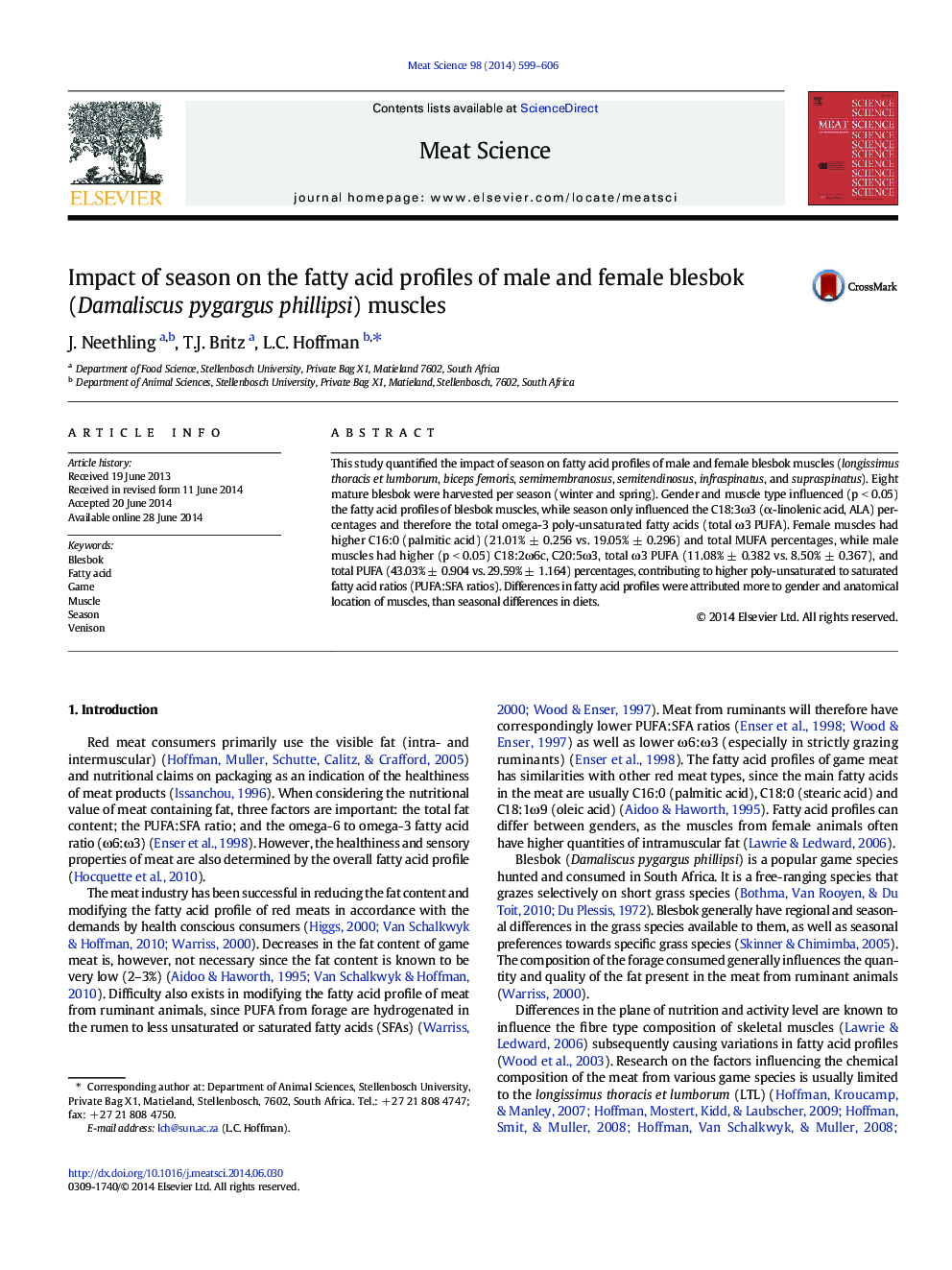| Article ID | Journal | Published Year | Pages | File Type |
|---|---|---|---|---|
| 2449988 | Meat Science | 2014 | 8 Pages |
•Seasonal differences in blesbok diet did not influence fatty acid composition of meat•Gender and muscle type differences influenced fatty acid profile of blesbok meat•Blesbok meat from this study area can be considered a healthy red meat alternative
This study quantified the impact of season on fatty acid profiles of male and female blesbok muscles (longissimus thoracis et lumborum, biceps femoris, semimembranosus, semitendinosus, infraspinatus, and supraspinatus). Eight mature blesbok were harvested per season (winter and spring). Gender and muscle type influenced (p < 0.05) the fatty acid profiles of blesbok muscles, while season only influenced the C18:3ω3 (α-linolenic acid, ALA) percentages and therefore the total omega-3 poly-unsaturated fatty acids (total ω3 PUFA). Female muscles had higher C16:0 (palmitic acid) (21.01% ± 0.256 vs. 19.05% ± 0.296) and total MUFA percentages, while male muscles had higher (p < 0.05) C18:2ω6c, C20:5ω3, total ω3 PUFA (11.08% ± 0.382 vs. 8.50% ± 0.367), and total PUFA (43.03% ± 0.904 vs. 29.59% ± 1.164) percentages, contributing to higher poly-unsaturated to saturated fatty acid ratios (PUFA:SFA ratios). Differences in fatty acid profiles were attributed more to gender and anatomical location of muscles, than seasonal differences in diets.
